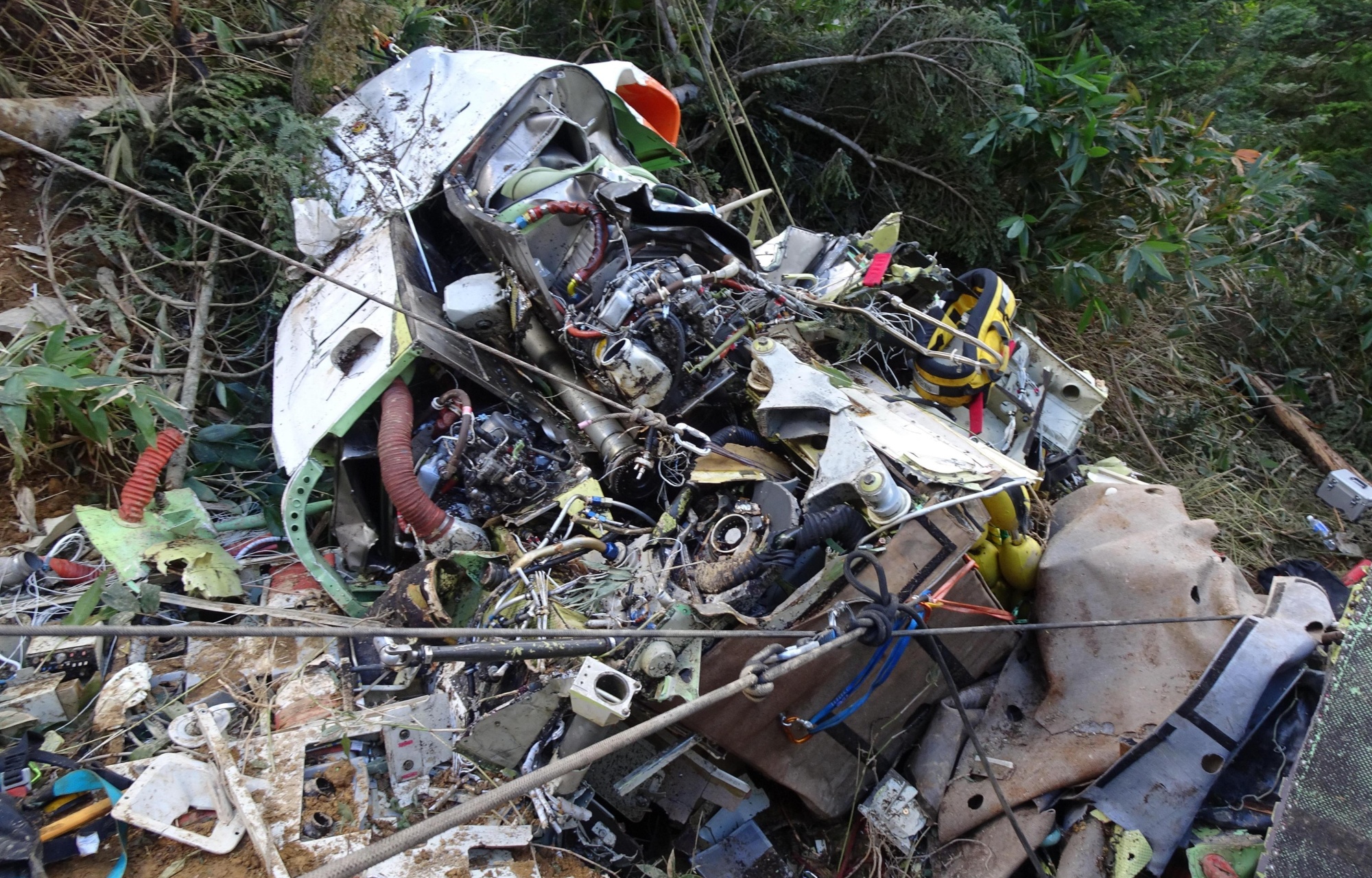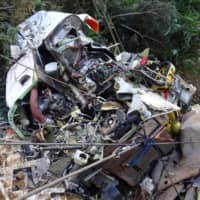Transportation authorities concluded Thursday that pilot vertigo caused an August 2018 helicopter crash in a mountainous area that killed all nine crew members.
Noriyuki Amagai, the 57-year-old pilot of the Bell 412EP rescue helicopter, is believed to have lost his bearings due to "spatial disorientation" while flying the chopper to assess a mountain trail in low visibility amid bad weather, the Japan Transport Safety Board said in a report.
Amagai was operating the helicopter under so-called visual flight rules, which depend on pilot vision, but could not determine the chopper's position relative to the surrounding environment, the board said.
The report recommended having two pilots share the workload on rescue helicopter flights to avert such accidents, a practice that the Fire and Disaster Management Agency plans to introduce in April 2022.
Noting that in many cases pilots of rescue helicopters fly in mountainous areas where weather conditions suddenly change, the board also advised them to quickly return to base and switch to autopilot when appropriate.
The chopper, owned by Gunma Prefecture and operated by the Tokyo-based aviation company Toho Air Service Co., crashed on Aug. 10, 2018, while checking a mountain trail on the borders of Gunma, Nagano and Niigata prefectures.
It carried members of Gunma's disaster management unit and firefighters.
According to the report, the chopper left the heliport in the city of Maebashi, the capital of Gunma, at 9:14 a.m. and crashed at around 10:01 a.m.
Before the crash, Amagai had changed the helicopter's course and altitude in an attempt to evade thick clouds and check the ground surface. But he suffered vertigo after accelerating and making circles in the thick clouds.
Noting that Amagai flew below the safety limit of 150 meters above ground, the report also said the pilot should have switched to autopilot and returned to the point of departure.




